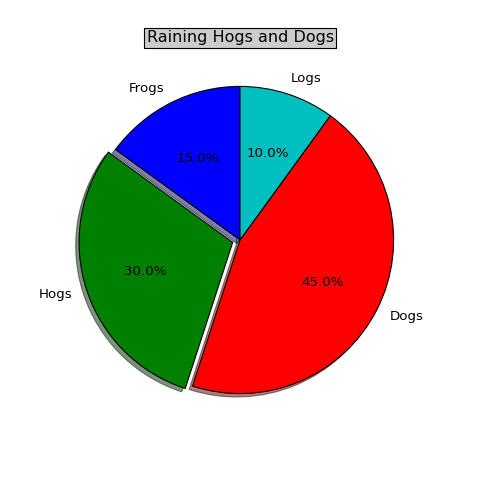

(Source code, png, hires.png, pdf)

"""
Make a pie chart - see
http://matplotlib.sf.net/matplotlib.pylab.html#-pie for the docstring.
This example shows a basic pie chart with labels optional features,
like autolabeling the percentage, offsetting a slice with "explode",
adding a shadow, and changing the starting angle.
"""
from pylab import *
# make a square figure and axes
figure(1, figsize=(6,6))
ax = axes([0.1, 0.1, 0.8, 0.8])
# The slices will be ordered and plotted counter-clockwise.
labels = 'Frogs', 'Hogs', 'Dogs', 'Logs'
fracs = [15, 30, 45, 10]
explode=(0, 0.05, 0, 0)
pie(fracs, explode=explode, labels=labels,
autopct='%1.1f%%', shadow=True, startangle=90)
# The default startangle is 0, which would start
# the Frogs slice on the x-axis. With startangle=90,
# everything is rotated counter-clockwise by 90 degrees,
# so the plotting starts on the positive y-axis.
title('Raining Hogs and Dogs', bbox={'facecolor':'0.8', 'pad':5})
show()
Keywords: python, matplotlib, pylab, example, codex (see Search examples)